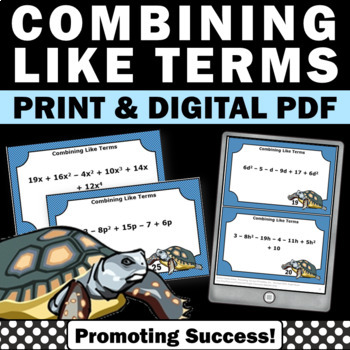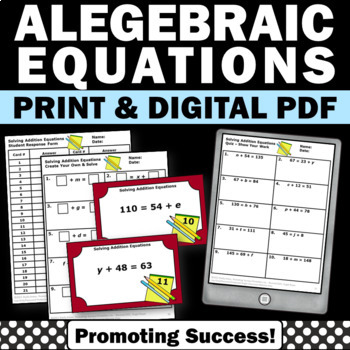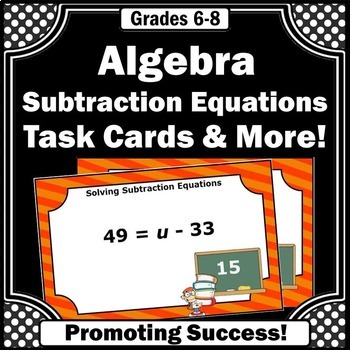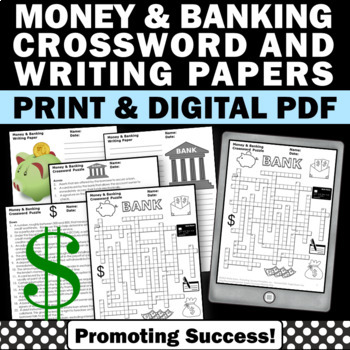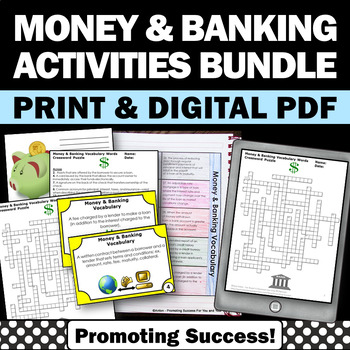The Common Core touches on algebraic thinking all throughout the elementary grades, even with lower elementary students.
In the 5th grade Common Core math standards, students begin algebraic numerical expressions:
Use parentheses, brackets, or braces in numerical expressions, and evaluate expressions with these symbols.
Write simple expressions that record calculations with numbers, and interpret numerical expressions without evaluating them. For example, express the calculation "add 8 and 7, then multiply by 2" as 2 × (8 + 7). Recognize that 3 × (18932 + 921) is three times as large as 18932 + 921, without having to calculate the indicated sum or product.
Note: This blog post contains resources from our TpT store and our Amazon Associate store.
---------------------------------------------
Making Connections
One method is to have students discuss solved problem structures and solutions to make connections among strategies and reasoning.
Some questions to help facilitate these discussions include:
What were the steps involved in solving the problem? Why do they work in this order? Would they work in a different order?
What were the steps involved in solving the problem? Why do they work in this order? Would they work in a different order?
Could the problem have been solved with fewer steps?
Can anyone think of a different way to solve this problem?
Will this strategy always work? Why?
What are other problems for which this strategy will work?
How can you change the given problem so that this strategy does not work?
How can you modify the solution to make it clearer to others?
What other mathematical ideas connect to this solution?
Questions to help facilitate the structure of problems:
What quantities—including numbers and variables—are present in this problem?
Are these quantities discrete or continuous?
What operations and relationships among quantities does the problem involve?
Are there multiplicative or additive relationships?
Does the problem include equality or inequality?
How are parentheses used in the problem to indicate the problem’s structure?
Review Incorrect Problems
It is also helpful to review incorrectly solved problems.
Can students analyze and discuss the errors?
Can students fix the problems to make them correct?
Algebra Basics Video
With over 2 million views, this video reviews the basics with your students.
Can students analyze and discuss the errors?
Can students fix the problems to make them correct?
---------------------------------------------
With over 2 million views, this video reviews the basics with your students.
---------------------------------------------
Using Task Cards for Whole Group Learning
Task cards are a great way to easily model algebra problems solved correctly.
Simply display a task card using the technology available in your room. Interactive white boards work well.
Choose the 1st task card and demonstrate the correct problem solving steps and solution.
You may even want to choose the 2nd task card and demonstrate the incorrect steps and solution. Sometimes "what not to do" works well for students.
Students can compare and contrast the two examples.
You also may want to make a game out of it and have the students determine which one was done correctly.
---------------------------------------------
Algebra Card Game
Here is an interesting card game for learning algebra. Do you think it would help your students?
---------------------------------------------
Here are some FREE algebra task cards from our TpT store to get you started:
You will receive 6 Common Core task cards with a mix of multiplication and division math expressions for 6th grade. Task cards are a wonderful break from worksheets. Student can play SCOOT, have a scavenger hunt or play other games. Try them for free today. A student response form and answer key are also provided.
---------------------------------------------
Click HERE for more printable algebra task cards and games.
---------------------------------------------
Note: More Department of Education math strategies may be found here.
---------------------------------------------
You may also like these printable Algebra activities and games from our Teaching Ideas and resources TpT store:
You will receive 2 anchor chart cards, 40 task cards, game ideas, a student response form, quiz and answer keys.
Common Core:
CCSS.Math.Content.6.EE.A.1
CCSS.Math.Content.7.EE.A.1
Task cards are a great alternative to worksheets. These activities allow for movement in the classroom, which brain research shows increases achievement. Students can play SCOOT, have a scavenger hunt, or engage in other movement games.
---------------------------------------------
You will receive 42 algebraic expressions task cards, 2 anchor cards, game ideas, extension activity, quiz, student response form and answer key.
CCSS.MATH.CONTENT.6.EE.A.2
Write, read, and evaluate expressions in which letters stand for numbers.
Task cards are a great alternative to worksheets. They allow for movement in the classroom, which brain research shows increases achievement. Students can play SCOOT, have a scavenger hunt, or engage in other movement games.
---------------------------------------------
You will receive 42 task cards, 2 anchor chart cards, extended activity, student response form, quiz and answer keys.
---------------------------------------------
You may also like these resources from our Amazon Associate store:
---------------------------------------
Click HERE to view our Teachers Pay Teachers Promoting Success store.

Shelly Anton is a participant in the Amazon Services LLC Associates Program, an affiliate advertising program designed to provide a means for sites to earn advertising fees by advertising and linking to Amazon.com. ** This means there are Amazon affiliate links in these blog posts. This does not mean you pay a dime more when you purchase a product through the link. It just means I am trying to save you valuable teacher time by making it easier for you to find valuable resources for your students, and I earn a few cents for my research and time. Thank you for all you do for kids!


